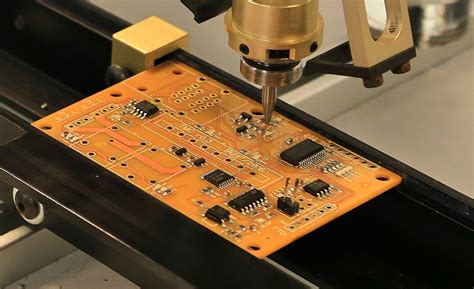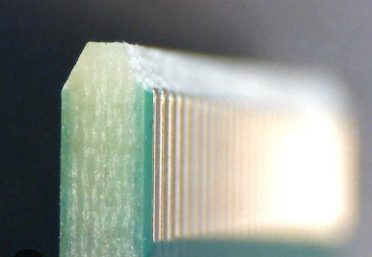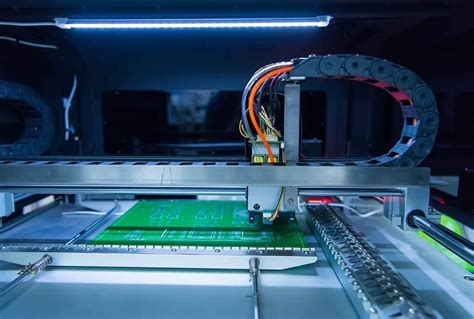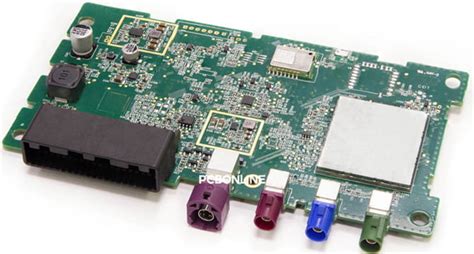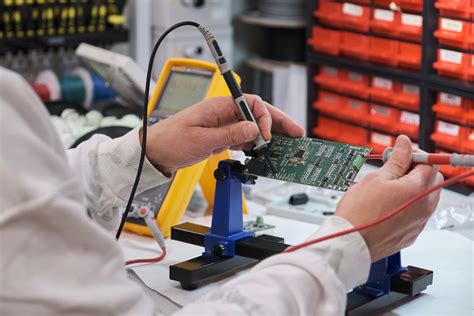Mastering Circuits Assembly: Innovations for the Future
Key Takeaways
The realm of pcb assembly plays a pivotal role in the landscape of modern electronics, influencing not only the performance but also the scalability of technology innovations. Among various methodologies, integrated circuit design and automated assembly are key techniques that enhance production efficiency and ensure that every pcba meets rigorous quality standards. One groundbreaking approach involves the use of advanced robotics, which streamlines the placement and soldering process, ultimately reducing human error and increasing precision. Additionally, data analytics is becoming indispensable in monitoring production cycles and identifying bottlenecks in real-time. As electronic devices continue to evolve, staying abreast of these innovations is crucial for manufacturers aiming to optimize their circuits assembly processes. Ultimately, these advancements not only promise improved product quality but also pave the way for more sustainable manufacturing practices by minimizing waste and resource consumption.
Introduction to Circuits Assembly: The Backbone of Modern Technology
The field of circuits assembly serves as a fundamental pillar within contemporary technological landscapes. At the heart of this process is pcb assembly (printed circuit board assembly), where intricate layouts of electronic components are meticulously integrated to form functioning circuits. As technology advances, the role of pcba (printed circuit board assembly) becomes increasingly crucial, ensuring devices operate with enhanced efficiency and reliability.
With the rapid evolution of electronics, innovations in circuits assembly are not merely beneficial; they are indispensable. Today’s manufacturers employ sophisticated techniques that improve not only speed but also accuracy. The integration of automation and precision machinery in pcb assembly processes exemplifies this advancement. For instance, the utilization of surface-mount technology (SMT) allows for denser circuit configurations and improved performance.
Effective circuits assembly is characterized by a thoughtful selection of tools and methodologies. Manufacturers are increasingly relying on advanced soldering techniques—like laser soldering—that offer exceptional control over heat application, thus minimizing damage to sensitive components in both pcba procedures and larger manufacturing scales.
To illustrate these advancements, we can look at a comparative table that outlines traditional versus modern methods in circuits assembly:
| Method | Traditional Approach | Modern Approach |
|---|---|---|
| Soldering Technique | Hand soldering | Laser soldering |
| Placement | Manual component placement | Automated pick-and-place technology |
| Quality Control | Visual inspection | Automated optical inspection (AOI) |
| Speed | Slower production rates | Rapid turnarounds with high volume |
As we delve deeper into the nuances of circuits assembly, it becomes clear that this field is more than just a technical process; it reflects the continuous push towards greater innovation that underpins modern technological development. The dedication to refining these techniques ensures that industries can thrive while adapting to ever-evolving demands for smaller, faster, and more efficient electronic solutions.
Latest Innovations Transforming Circuits Assembly
The evolution of pcb assembly has been accelerated by innovative technologies that enhance both the efficiency and quality of electronic manufacturing processes. Among these advancements, the integration of automation and robotics has played a pivotal role, significantly reducing assembly time while increasing precision. The latest pcba methodologies leverage smart technologies, such as the Internet of Things (IoT), enabling real-time monitoring and adjustments during production. This dynamic approach not only minimizes errors but also optimizes resource management. Furthermore, advancements in materials—like flexible substrates and high-speed connectors—facilitate more compact and efficient circuit designs, transforming how devices are conceptualized. These innovations stimulate creativity among engineers, allowing for the development of state-of-the-art products that meet the complex demands of modern technology. As we delve deeper into these trends, it becomes evident that a focus on sustainability is also reshaping circuits assembly, incorporating eco-friendly materials and practices that align with global environmental goals. The insights gained from these innovations indicate a promising direction for future developments in pcb assembly, where technology and sustainability converge to foster a new era in electronic manufacturing.
Key Techniques for Enhanced Efficiency in Electronic Manufacturing
In the realm of pcb assembly and pcba, efficiency is paramount to maintaining competitiveness in electronic manufacturing. One of the leading techniques enhancing efficiency is the implementation of advanced automation technologies, which streamline the assembly process and reduce human error. Adopting a modular design approach allows for easier updates and adjustments within production lines, facilitating rapid changes in design without major overhauls. Furthermore, real-time monitoring tools are becoming essential; they provide immediate feedback on the assembly process, allowing manufacturers to identify and rectify issues swiftly.
Additionally, incorporating lean manufacturing principles can drastically cut down on waste and improve turnaround times through optimized workflow. The utilization of high-precision tools ensures accuracy at every stage, reducing rework and increasing overall product quality.
“Investing in technology not only enhances production capabilities but also improves employee satisfaction by reducing monotonous tasks,” emphasizes an industry expert.
By focusing on these techniques, manufacturers can not only boost efficiency but also ensure that their processes remain resilient in the face of rapidly evolving technology demands. As we look to the future, understanding and implementing these key strategies will undoubtedly be crucial for success in circuits assembly.
Tools Revolutionizing Circuits Assembly Processes
In the rapidly evolving landscape of pcb assembly, innovative tools are at the forefront of transforming traditional methods into more efficient and precise workflows. Advanced pcba technologies, such as automated optical inspection (AOI) systems, have significantly enhanced quality control by identifying defects early in the assembly process. These tools not only minimize human error but also streamline production, allowing for faster turnaround times and greater scalability. Meanwhile, 3D printing technologies are making significant inroads into circuits assembly, enabling manufacturers to produce complex components with minimal waste and alteration of design specifications. Additionally, software solutions for design verification help engineers refine their designs virtually before actual production, ensuring that the resulting pcb assembly processes are both cost-effective and adherent to rigorous standards. As these tools continue to develop, they are setting the stage for a future where pcba techniques become more integrated and adaptable to changing technological demands. The interplay between these innovations fosters a landscape where precision meets efficiency, ultimately redefining what is possible in electronic manufacturing.
Methodologies for Precision in Circuit Assembly
In the realm of pcb assembly, achieving precision is paramount for the reliability and functionality of electronic devices. To enhance precision in pcba processes, manufacturers are adopting several cutting-edge methodologies. One such approach is the integration of automated optical inspection (AOI) systems, which meticulously examine components and solder joints to identify defects at early stages. This technique not only reduces errors but also streamlines quality control, ensuring that every assembled circuit meets stringent standards.
Moreover, the application of real-time data analytics allows teams to monitor production processes continuously, providing crucial insights into performance metrics. By utilizing these analytics, manufacturers can swiftly adjust parameters to mitigate variations and maintain high precision levels. Another innovative methodology is the use of advanced soldering techniques like selective soldering, which minimizes thermal stress on components while enhancing joint reliability.
Furthermore, employing design for manufacturability (DFM) principles at the initial design phase contributes significantly to precision during assembly. By optimizing layouts and component placements, DFM facilitates easier handling and assembly processes, ultimately leading to fewer defects in the final product. As these methodologies evolve, they pave the way for a more efficient future in pcb assembly, underscoring that precision and innovation go hand in hand in shaping modern electronic manufacturing practices.
The Future of Circuits Assembly: Trends to Watch
As technology continues to evolve, the field of pcb assembly is witnessing transformative changes that are setting the stage for the future of pcba processes. One of the most significant trends is the push towards automation. Automated systems enhance speed and reduce human error, ensuring that each component is assembled with precision. This is particularly crucial in an era where miniaturization is key; smaller and more complex circuits demand tighter tolerances and advanced assembly techniques. Additionally, the integration of smart manufacturing concepts—such as IoT-enabled machinery—facilitates real-time monitoring and data analysis, leading to improved operational efficiency.
Moreover, sustainable practices are emerging as a priority within circuits assembly. The emphasis on reducing waste, recycling materials, and optimizing energy consumption reflects a broader commitment to environmental responsibility. Companies are increasingly utilizing eco-friendly materials and processes in their pcb assembly workflows to align with global sustainability goals.
In terms of methodologies, approaches like lean manufacturing are becoming standard in many operations, helping to streamline processes and reduce unnecessary steps in pcba design and execution. Furthermore, advancements in additive manufacturing technology allow for rapid prototyping and quicker iterations in circuit design. The adoption of these innovations not only equips manufacturers with cutting-edge tools but also positions them favorably in a competitive market as they adapt to changing customer demands and preferences.
Overall, as we move forward into this new age of circuits assembly, organizations that stay ahead of these trends will likely lead the charge towards greater efficiency, sustainability, and technological advancement in electronic manufacturing.
Challenges and Solutions in Modern Circuits Assembly
As the demand for more sophisticated electronic devices grows, the challenges faced in the world of pcb assembly and pcba are becoming increasingly complex. One of the primary challenges is ensuring high precision in the manufacturing process. Inaccuracies can lead to defective products, resulting in increased costs and delayed timelines. Furthermore, the integration of various technologies into a single circuit board intensifies the design complexities, requiring advanced skills and tools for effective assembly.
Another significant issue is managing production efficiency. As products become more intricate, maintaining a swift yet accurate assembly line becomes crucial. Companies are now turning to automated solutions and innovative technologies to overcome this hurdle. By employing robotic assembly systems and advanced soldering techniques, businesses can optimize their workflow and significantly reduce errors.
Additionally, supply chain disruptions pose a constant risk to circuit assembly operations. The reliance on specific materials means that any interruptions can halt production entirely. Diversifying suppliers and investing in local sourcing strategies are effective solutions that many companies are adopting to mitigate this risk.
In summary, while there are several challenges associated with modern pcb assembly, including precision demands, efficiency issues, and supply chain vulnerabilities, many organizations are proactively seeking innovative solutions. By embracing technology and rethinking traditional practices, the future of pcba stands on solid ground amidst these complexities.
Case Studies: Successful Implementations of Innovative Techniques
In the rapidly evolving landscape of pcb assembly and pcba, several companies have successfully integrated innovative techniques, leading to remarkable outcomes. For instance, a leading electronic manufacturing firm adopted an advanced automated system that enhanced their throughput rates by over 30%. This transformation came through the implementation of smart robotics and real-time monitoring processes, which allowed for greater precision in the circuits assembly phase. Another notable case involved a startup that leveraged machine learning algorithms to predict potential failures in their assembly line, significantly reducing waste and downtime. By analyzing patterns in past production data, they achieved a remarkable increase in their yield rates while maintaining the quality of their pcba products. These case studies not only illustrate the application of cutting-edge techniques but also emphasize the importance of adaptability and continuous improvement in circuits assembly practices, ensuring these organizations remain competitive in an ever-changing market. The insights gleaned from these implementations are invaluable for other manufacturers striving to enhance their processes and outcomes in electronic manufacturing.
Conclusion
In conclusion, the landscape of pcb assembly is evolving rapidly, driven by innovative technologies and methodologies that enhance productivity and precision. As we have explored throughout this article, the focus on pcba not only promises to improve operational efficiency but also addresses some of the critical challenges faced by electronic manufacturers. Techniques such as advanced automation and AI-assisted design tools are reshaping how circuits are assembled, ushering in a new era of manufacturing excellence. Furthermore, the integration of reliable quality control processes ensures that each pcb assembly meets the highest standards before reaching consumers. Looking ahead, it is evident that embracing these advancements will be crucial for companies aiming to stay competitive in a fast-paced industry. By continuously adapting to these trends and investing in innovative solutions, businesses can position themselves as leaders in the realm of pcba, ready to harness the full potential of future technologies.
FAQs
What is pcb assembly?
PCB assembly, commonly referred to as PCBA, is the process of connecting electronic components to a printed circuit board (PCB) to create a functional electronic circuit. This assembly includes soldering components onto the board, which can be done manually or through automated processes.
What are the technologies used in pcba?
Various innovative technologies are employed in PCBA, including Surface Mount Technology (SMT), Through-Hole Technology, and mixed technologies. Each method has its own advantages, contributing to the overall efficiency and flexibility of the assembly process.
How can I ensure quality in circuits assembly?
Ensuring quality in circuits assembly involves rigorous testing and inspection protocols, including Automated Optical Inspection (AOI) and Functional Testing. These methods help identify defects early in the process, reducing waste and enhancing product reliability.
What role does automation play in pcba?
Automation plays a crucial role in improving efficiency and precision in pcb assembly. Automated machines can quickly place components on boards with high accuracy, significantly reducing human error and labor costs.
How do I choose the right tools for circuits assembly?
Selecting the right tools for circuits assembly depends on several factors such as project requirements, volume of production, and budget. It is essential to evaluate tools that best fit your specific needs while ensuring they support modern methodologies for enhanced efficiency.
If you’re looking to dive deeper into these innovations and techniques, please click here: Explore PCB Assembly

